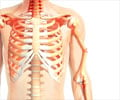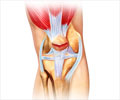Secondary fracture among people aged 65 years and older linked with hip or vertebral fracture is a very serious complication associated with osteoporosis.

‘The value of our secondary fracture prevention efforts is that it will be used to initiate an action plan to improve the current practice of not treating many patients who have sustained a hip or vertebral fracture.
’
Read More..




A multistakeholder coalition assembled by the American Society for Bone and Mineral Research (ASBMR) has issued clinical recommendations for the optimal prevention of secondary fracture among people aged 65 years and older with a hip or vertebral fracture - the most serious complication associated with osteoporosis. Douglas P. Kiel, M.D., M.P.H., Director of the Musculoskeletal Research Center in the Hinda and Arthur Marcus Institute for Aging Research at Hebrew SeniorLife and Professor of Medicine at Harvard Medical School, is senior author on the report and served as co-leader of the project. The recommendations were published last month in the Journal of Bone and Mineral Research to coincide with the annual meeting of the ASBMR where Dr. Kiel was honored with the 2019 Esteemed Frederic C. Bartter Award. This prestigious award is bestowed upon an ASBMR member in recognition of outstanding clinical investigation in disorders of bone and mineral metabolism.Read More..
Osteoporosis is a disease of the bones that cause them to weaken and fracture more easily. Approximately 10 million Americans have osteoporosis, and 44 million have low bone density, placing them at risk of developing the disease. This means half of all adults over 50 are at risk of fracture or should be concerned about bone health.
Bone fractures are painful and debilitating, and pose a serious health threat to older adults. Despite remarkable advances in treatment, osteoporosis?related fractures are undertreated, due in part to misinformation about recommended approaches to patient care and discrepancies among treatment guidelines. To help address this problem and improve patient outcomes, ASBMR engaged the Center for Medical Technology Policy (CMTP) to help develop a consensus by a broad multistakeholder coalition regarding several aspects of osteoporosis treatment with aim of promoting more effective treatment for patients with osteoporosis and prevention of a secondary fracture in patients who have already suffered a fracture. The coalition was comprised of representatives from 42 professional organizations from the United States and abroad, including the American College of Physicians, American Association of Nurse Practitioners, American Geriatrics Society, and International Osteoporosis Foundation.
Based on a review of existing clinical guidelines and medical literature, CMTP developed an initial set of draft recommendations, which were reviewed and edited sequentially by the coalition co?chairs and ASBMR, the coalition steering committee, and the full coalition. The cycle was repeated until consensus was reached.
The coalition developed 13 recommendations strongly supported by the empirical literature and recommends increased communication with patients regarding fracture risk, mortality and morbidity outcomes, and fracture risk reduction.
Advertisement
Source-Eurekalert















